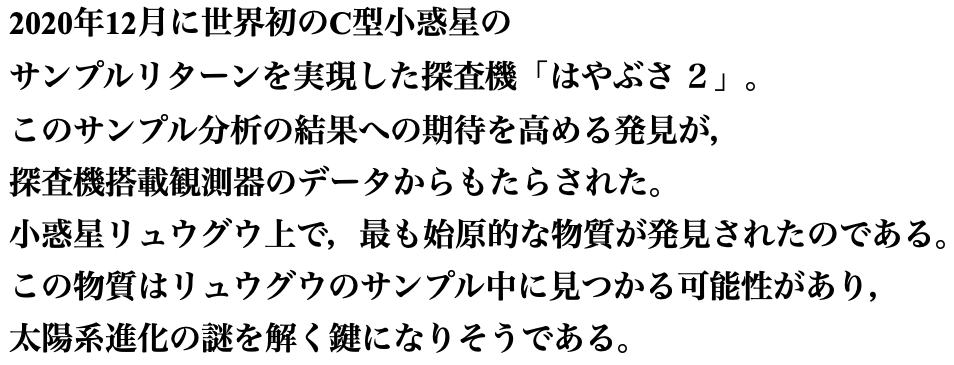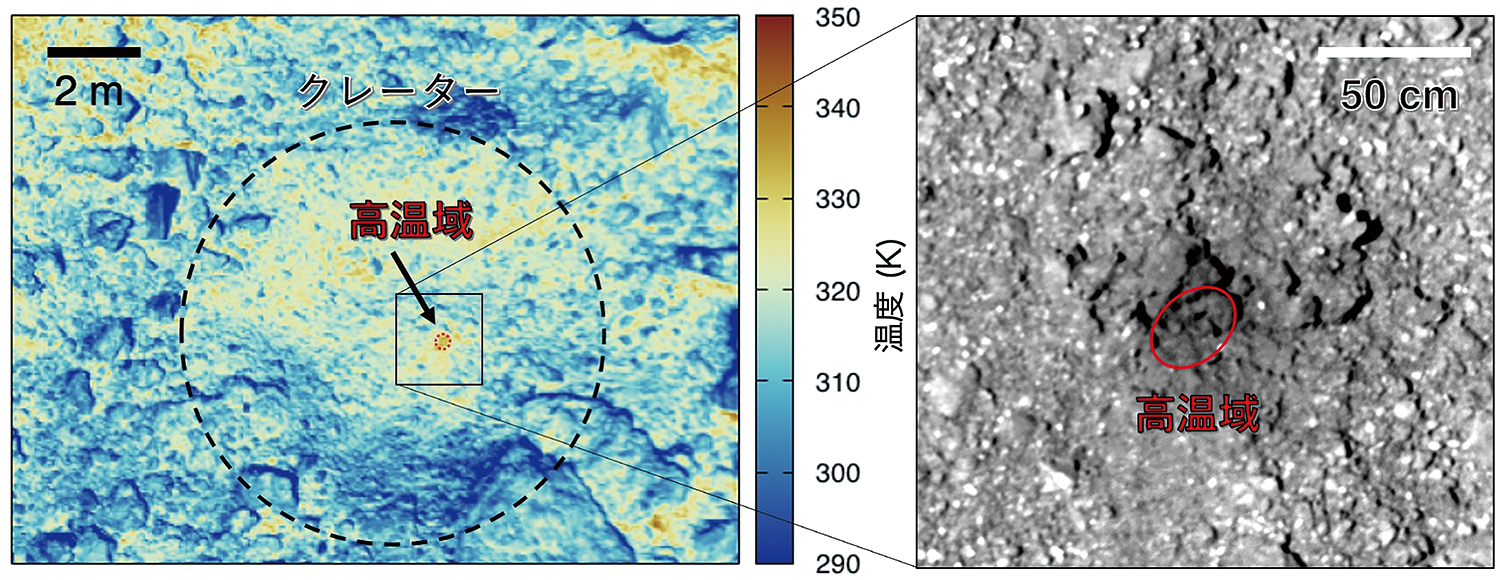Disclaimer: machine translated by DeepL which may contain errors.
Discovery of the Most Primitive Rocks on Asteroid Ryuguu
Seiji Sugita (Professor, Department of Earth and Planetary Science / UTokyo Organization for Planetary and Space Science) |
Tomokatsu Morota (Associate Professor, Department of Earth and Planetary Science / UTokyo Organization for Planetary and Space Science) |
Shogo Tachibana (Professor, Department of Earth and Planetary Science, UTokyo Organization for Planetary and Space Science) |
Tomokatsu Morota (Associate Professor, Department of Earth and Planetary Science) |


First, why is primordial matter important? Since a planet is a dissipative system in the sense of statistical mechanics, its entropy increases with time and it loses information about its initial state. Therefore, it is difficult to determine the initial state from observations of the final state. However, since a planet is also a complex system, small differences in the initial state can produce large differences in the final state. This is why JAXA's Hayabusa2 and NASA's OSIRIS-REx search for primordial objects.
So, how can we tell if the material is primordial or not? Planets are thought to have been formed by the collision and coalescence of microplanets, which are formed when fine dust collects in the primordial solar nebula. Therefore, microplanets have a scabrous structure (high porosity) like a ball of dust. Later, as the microplanets collide and merge to form larger planets, the voids are collapsed by self-gravity and the porosity decreases. Therefore, materials with higher porosity are more likely to be primordial and retain more information about the primitive solar nebula.
 |
|
| Figure: Rocks with high porosity found at the base of craters on the asteroid Ryuguu (modified from Sakatani et al., (2021)). Left: Brightness temperature map. The high porosity region is hotter than the surrounding area due to low thermal conductivity. Right: Optical camera image. Many cracks with sharp fracture surfaces are observed in the high porosity region. The high porosity area is darker than the surrounding area, but the temperature difference caused by this difference in reflectance is very small, less than 1%. | |
Materials with high porosity have low thermal conductivity. When materials with low thermal conductivity are heated from the surface by sunlight, the temperature rises quickly because the heat does not escape to the subsurface. Therefore, if a thermal infrared camera is used to measure the temperature of the asteroid from morning to noon, materials with high porosity will appear hotter than their surroundings. By focusing on this property, we analyzed the IR camera images and found a group of rocks that were abnormally hot near the center of some small craters. Detailed analysis revealed that this rock group has a porosity of about 70%, which is much higher than the average porosity (30-50%) of Ryugyu's rocks. This value is high enough to compete with the porosity of comets. This is the most primitive material with primitive characteristics found in Ryuguu.
Many other small fragments of material with different reflectance and spectral shape from the average material have been found in Ryuguu, and it is assumed that they are materials originating from various parts of Ryuguu's parent body or exogenous materials originating from objects that collided with the parent body. These various materials, along with the primitive materials mentioned above, may be discovered in the Earth return samples from Ryuguu in the future. The results of further sample analysis are expected.
The results of this research were published in Nature Astronomy in print (2021) by N. Sakatani et al. and Nature Astronomy 5, 39 (2021) by E. Tatsumi et al.
Published in Faculty of Science News, September 2021
Communicating to Faculty Research Students >


